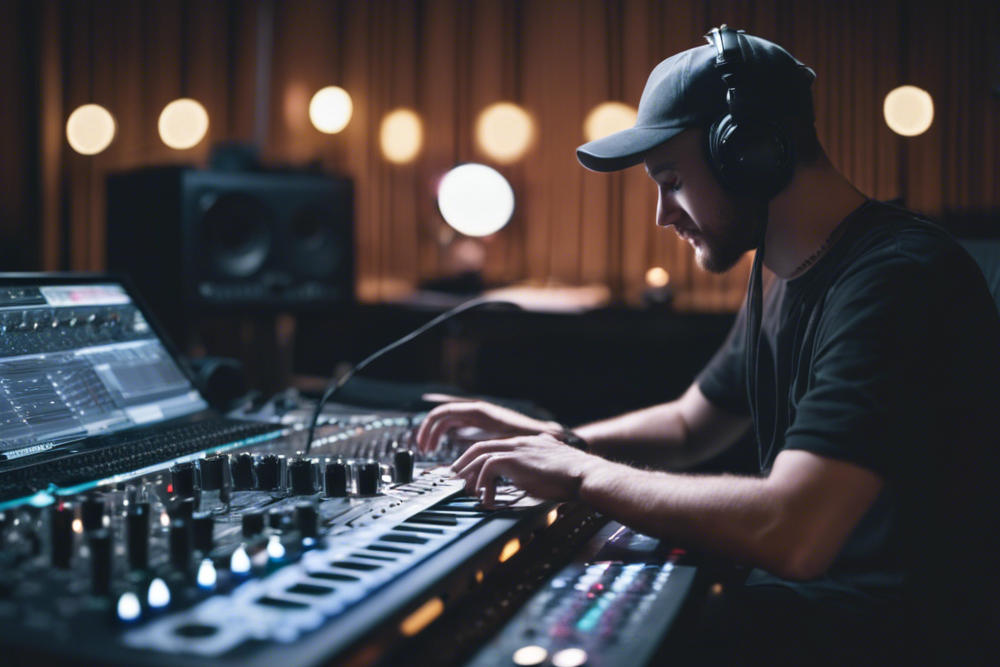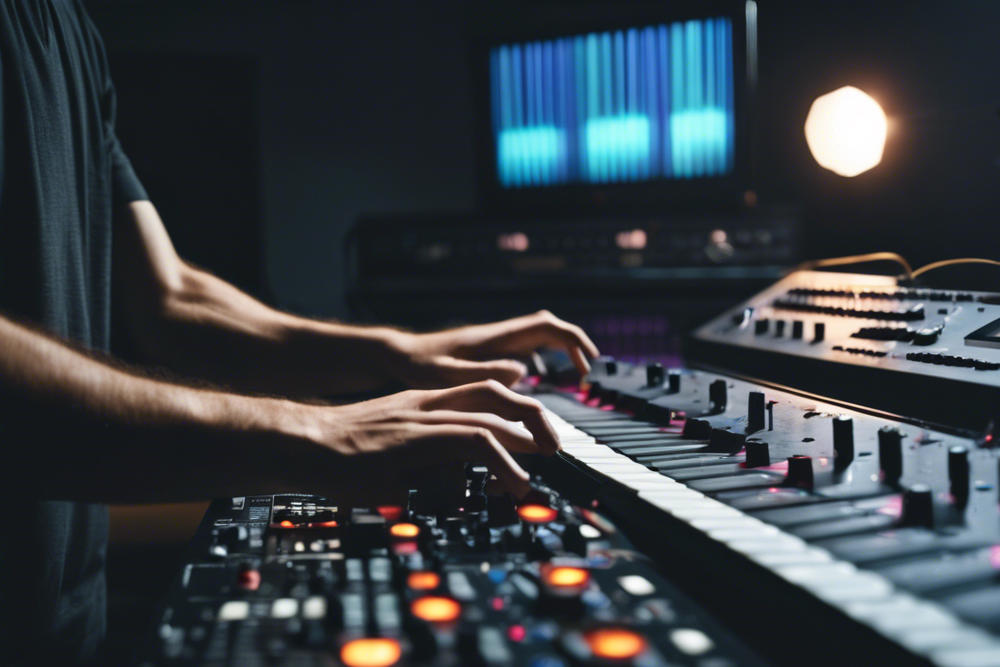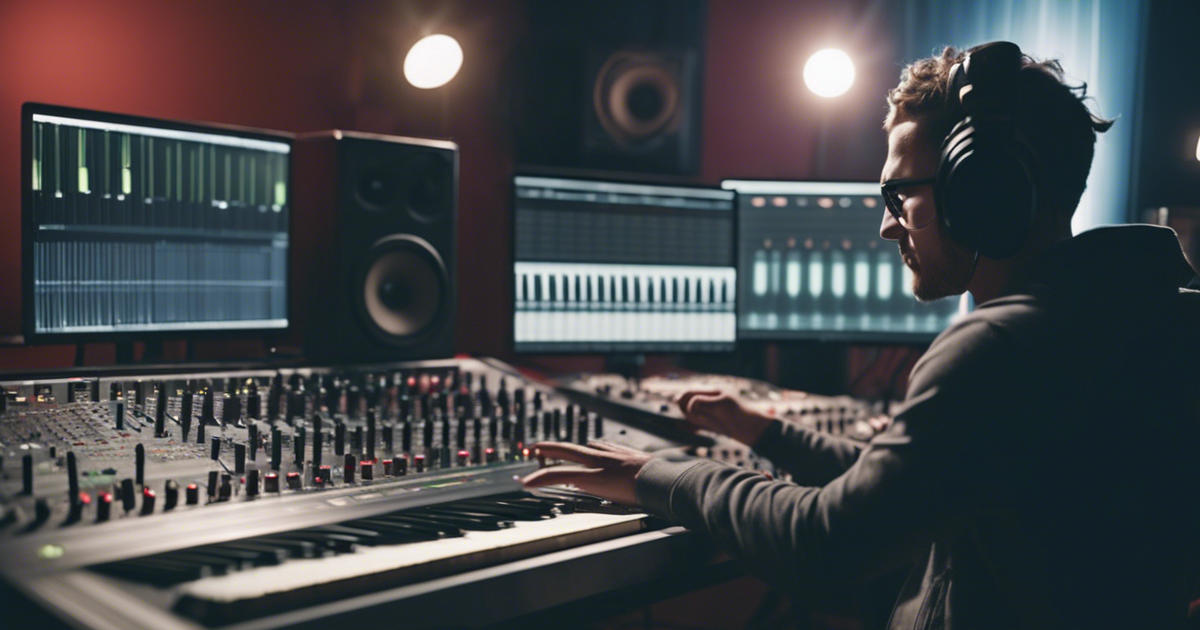Estimated reading time: 5 minutes
Introduction
Wondering how to make your beats louder without sacrificing quality? This guide covers essential techniques and tools to boost volume and maintain dynamic sound, ensuring your music stands out. Dive in for expert tips and elevate your production game!
Table of contents
- Introduction
- Understanding the Basics of Sound Levels
- Techniques for Boosting Volume without Compromising Quality
- Essential Tools for Enhancing Audio Loudness
- Adjusting Individual Tracks for a Cohesive Sound
- The Role of Equipment: Choosing the Right Headphones and Speakers
- Common Mistakes to Avoid in Audio Violation
- Video Tutorial – Make Your Beats Loud
- Conclusion and Tips for Continued Improvement
- FAQs
Understanding the Basics of Sound Levels
When embarking on your quest for louder beats, it’s crucial to start with a solid understanding of sound dynamics. The term dynamic range refers to the difference between the quietest and loudest parts of your audio. A good grasp of this concept helps in achieving a perfect balance that can elevate your sound quality without pushing the volume to distortion.
| Concept | Description |
|---|---|
| Dynamic Range | Difference between the quietest and loudest parts of your audio. |
| Importance | Achieving a balance between loud and quiet parts enhances sound quality without causing distortion. |
| Goal | Maintain dynamic range to ensure a lively and clear sound. |
| Impact | Proper dynamic range management prevents any track from overpowering others in the mix. |
Techniques for Boosting Volume without Compromising Quality
To make your beats not only louder but also maintain a dynamic sound, consider these techniques:
- Volume Control: Start by ensuring all your tracks are uniformly balanced. This prevents any one track from overpowering the others.
- Layering Sounds: This involves adding multiple layers of similar sounds at different octaves or timings to create a fuller sound.
- Compression: Use compression wisely to reduce the dynamic range of your audio. This makes quieter sounds louder and loud sounds softer, which can dramatically increase overall loudness.
- Equalization (EQ): Filter out unwanted frequencies that muddle your sound, and enhance those that contribute to a balanced and full-bodied sound.

Essential Tools for Enhancing Audio Loudness
For those using digital audio workstations like FL Studio, incorporating some audio editing tools can make a significant difference:
- Limiter: This tool helps prevent clipping, a form of distortion that occurs when the volume exceeds the maximum capacity of the track.
- Multiband Compressor: Allows you to apply different amounts of compression to various frequency bands for more precise control over the sound dynamics.
- Stereo Enhancer: Increases the stereo effect, making the track feel broader and more engaging without necessarily increasing the volume.
Adjusting Individual Tracks for a Cohesive Sound
Focus on the volumes of individual tracks. Each element should contribute to a cohesive sound without any single instrument drowning out the others. Here’s how you can achieve this:
- Solo and Mute: Regularly solo and mute tracks to understand how each contributes to the overall mix.
- Panning: Adjust the stereo placement of each track to distribute audio evenly across the soundscape.

The Role of Equipment: Choosing the Right Headphones and Speakers
All your efforts can be undermined by poor choice of output devices. High-quality headphones or speakers with a flat frequency response are essential. They provide an accurate, uncolored representation of your music, which is vital for effective mixing and mastering.
- Closed-back headphones are recommended for isolated listening.
- Impedance in headphones also affects the loudness; higher impedance generally offers better quality but may require more power.
Common Mistakes to Avoid in Audio Violation
Here are a few pitfalls to watch out for:
- Overcompression: While compression is useful, too much can lead to a lifeless, flat sound.
- Ignoring Acoustics: The environment where you mix your tracks can greatly influence your perception of sounds.
- Neglecting Reference Tracks: Always have a few professionally mastered tracks at hand to compare your sound against.
Video Tutorial – Make Your Beats Loud
Conclusion and Tips for Continued Improvement
Finally, remember that achieving a louder sound is not just about turning up the volume. It’s about understanding the intricacies of sound, using the right tools, and continuously refining your skills. Regularly revisit your techniques, seek feedback from other producers, and keep experimenting with new approaches.
We hope this guide has helped you understand how to make your beats louder while ensuring a high-quality audio experience. For more tips and detailed guides, keep checking our blog. Happy mixing!
Related Posts
- How to Export Stems in FL Studio? A Step-by-Step Guide
- How to Make Loops: A Guide for Music Producers
- How to Compress Vocals? A Step-by-Step Guide to Perfectly Compressed Vocals
- How to Sidechain? A Step-by-Step Guide to Achieve that Perfect Pump
- How to Fix Peaking Audio: Essential Tips for Clear Sound
- How to Harmonize: A Beginner’s Guide to Creating Beautiful Vocal Harmonies
- How Much Does it Cost to Make a Music Video?
FAQs
The best way is to use compression and equalization wisely. Compression reduces dynamic range, making quieter sounds louder and loud sounds softer. Equalization filters out unwanted frequencies and enhances those that contribute to a balanced, full-bodied sound.
Use volume control to ensure uniform balance across all tracks. Regularly solo and mute individual tracks to understand their contribution to the overall mix. Adjust panning to distribute audio evenly across the soundscape, creating a cohesive sound.
Essential tools include limiters, which prevent clipping, multiband compressors for precise control over different frequency bands, and stereo enhancers to broaden the track’s sound without increasing the volume. These tools help maintain quality while boosting loudness.
High-quality headphones or speakers with a flat frequency response provide an accurate representation of your music, essential for effective mixing and mastering. Closed-back headphones are recommended for isolated listening, and higher impedance headphones offer better quality but may need more power.
Avoid overcompression, which can lead to a lifeless sound. Pay attention to the acoustics of your mixing environment as it affects sound perception. Always use reference tracks to compare and ensure your mix meets professional standards.
